A few folks have noticed that I wear my KISS Sidewinder with the hoses routed under my arms. There are a couple of reasons for this, first and foremost, it prevents the hoses from rubbing on the cave ceiling while squeezing through very low bits. Secondly, it makes gearing up more comfortable for me, the loop is always easily in reach. In addition, it leaves my shoulders open for mounting a second rebreather with its own loop hoses. Below are some pictures of how I set mine up, mounted onto my light harness and triangular wing.
Surveying in Giant Cave, Belize on the sidewinder. Hoses routed under the shoulder.
If you have set your Sidewinder up with Edd at Cave Adventurers, or Mike Young, there isn't much to do to move the hoses to the front, but if you want to streamline your diluent or oxygen hoses, that is a different matter altogether. I won't get into that here.
The basic setup, looking at it from the back, which shows my connection points, and not much else. You can see that I have a single offboard QC6 which feeds diluent, my low profile oxygen setup (see the writeup on changes with that here.) I will note that I have since switched to the smaller counterlung, as it more closely matches my lung volume, and is not as easily overinflated.
The diamond wing with basic harness and Andrew Goring's hardware.
After my last dive rite harness completely exploded (after 15 years of very hard use, no shade on Dive Rite) I decided to try something different. I wanted something that would not require sewing in the field when it fell apart or ripped. I decided on a triangular wing and a web harness. The most important part are the mounting brackets on the spine strap. You can see them with two holes on either side along the center strap.
The small counterlung with the wing and harness.
I found that the larger counterlung created a bubble under the top of the wing, lifting the wing up. No matter how low profile the wing was, this created a hump-back situation. The smaller counterlung fits lower on my back allowing the wing to be secured to the center strap preventing as much of a hump. Another sidewinder diver using a Dive Rite LTZ brings his counterlung and cans even lower, running the waist strap above the counterlung ports. (He is also about 5'8" tall.)
Harness with cans, no counterlung to show connection points.
The cans connect via 550 cord loops to the plates along the center spine, between the wing and the body. This keeps all the snag points underneath the wing and away from damage. The standard KISS plate and attachments could easily be used here, just add grommets to the spine strap. I decided against the stock plate, as I am always looking to reduce equipment to be carried. Notice that the hose towers are now facing upwards, ready for forward facing loop hoses.
Loop Hoses installed.
I will finish off with a gallery of me wearing the rebreather out of the water, which shows how the cans sit on my body, and how the various parts interact with the harness. I will also note that with tanks, no rebreather and jetfins, this rig is longitudinally neutral. Adding the rebreather with the large counterlung and no oxygen bottle, the center of gravity shifts to the feet requiring about 4 pounds in the shoulder area. With the smaller counterlung, this is reduced to less than two pounds. Remember, this is without light cannister or oxygen bottle. Adding the oxygen bottle and 15 Ah battery cannister shifts the CG even further to the feet. With a 2mm wetsuit and jetfins I was requiring 11 pounds near the shoulders to counterbalance the large counterlung, oxygen bottle and battery can. With a CF200 drysuit, I can correct enough with the drysuit that I only need about 6 pounds on the shoulders, but the oxygen bottle is still an issue I want to correct. And yes, my wing pull dump needs fixing. ;)
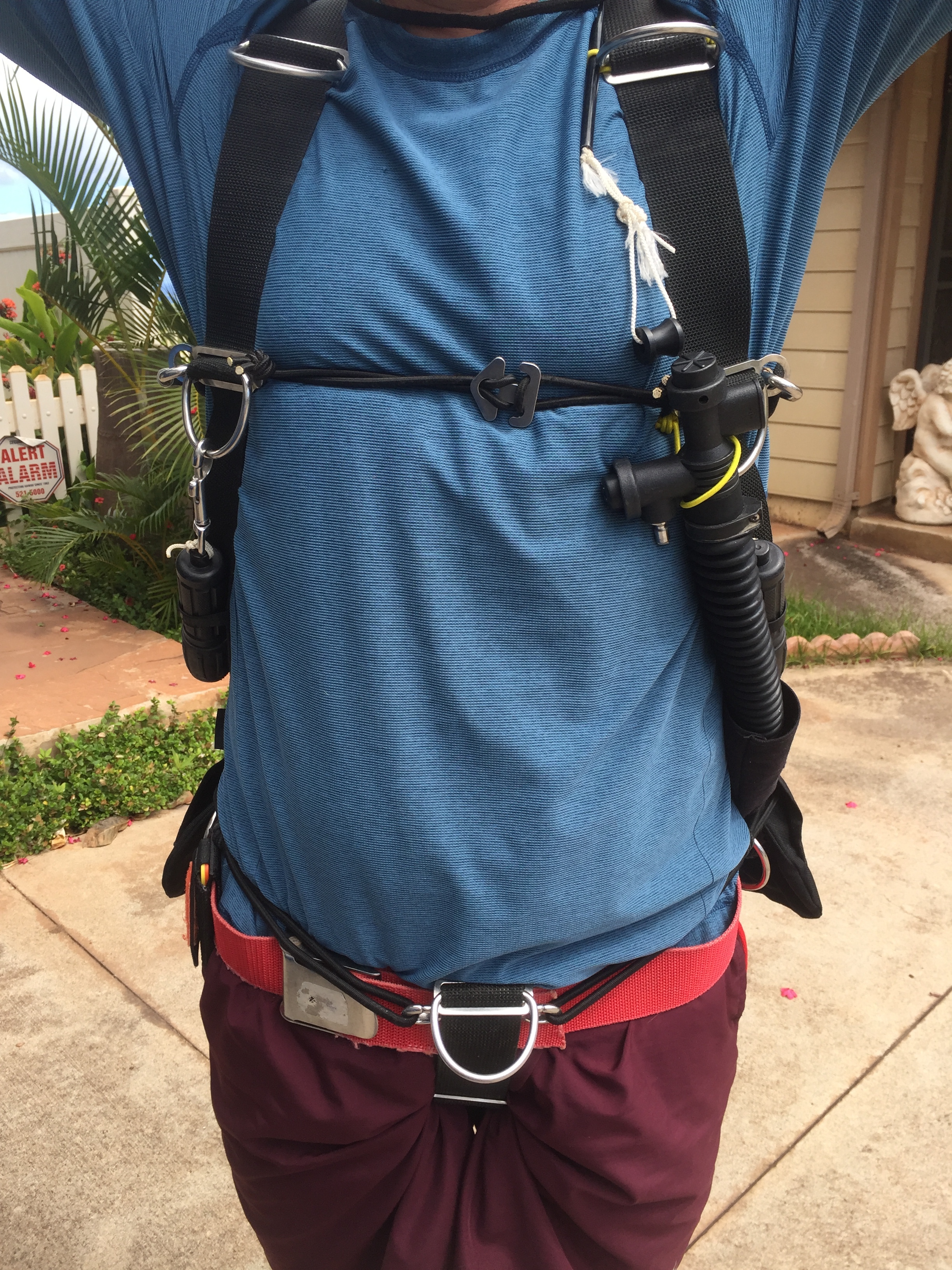
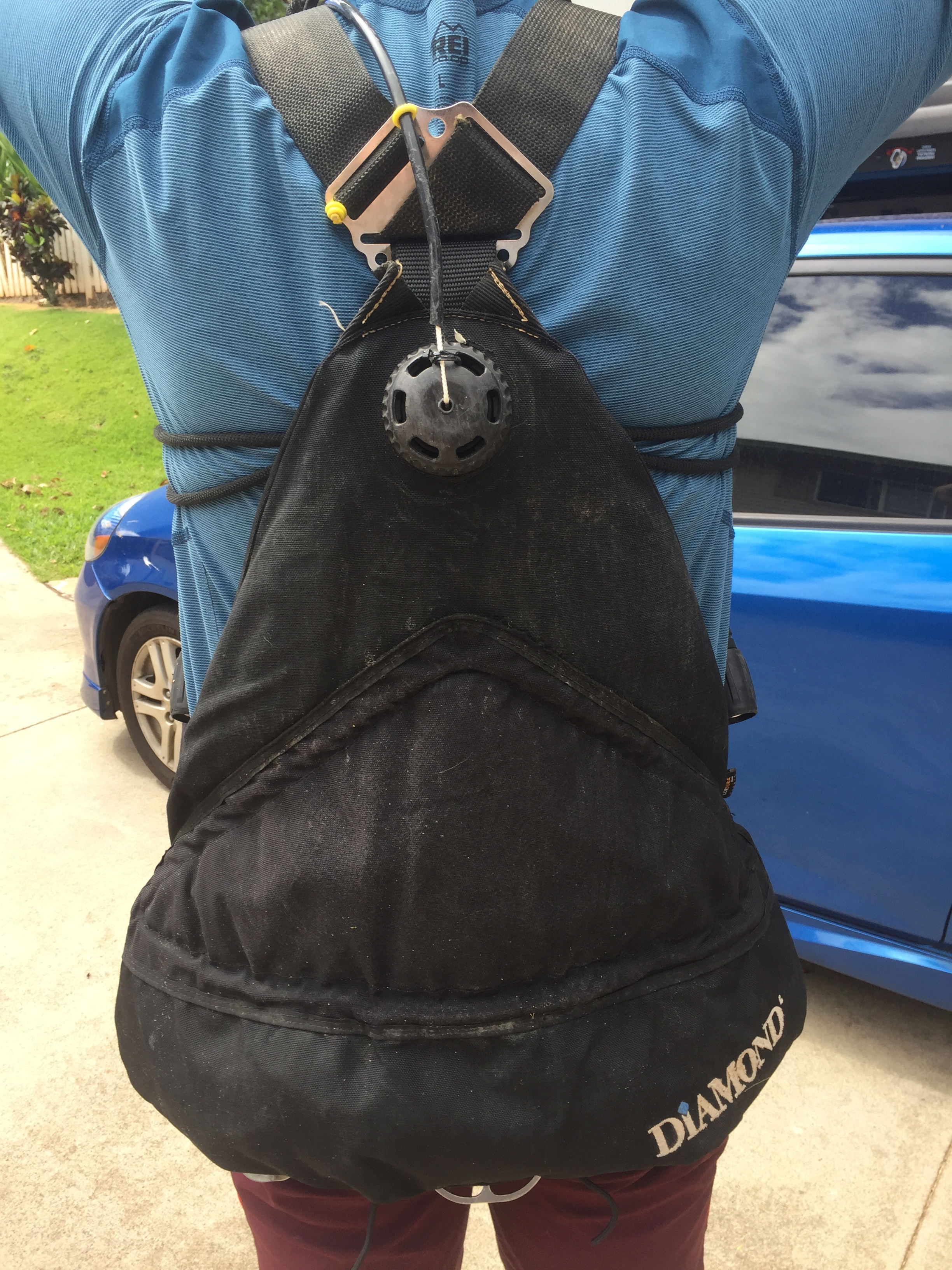
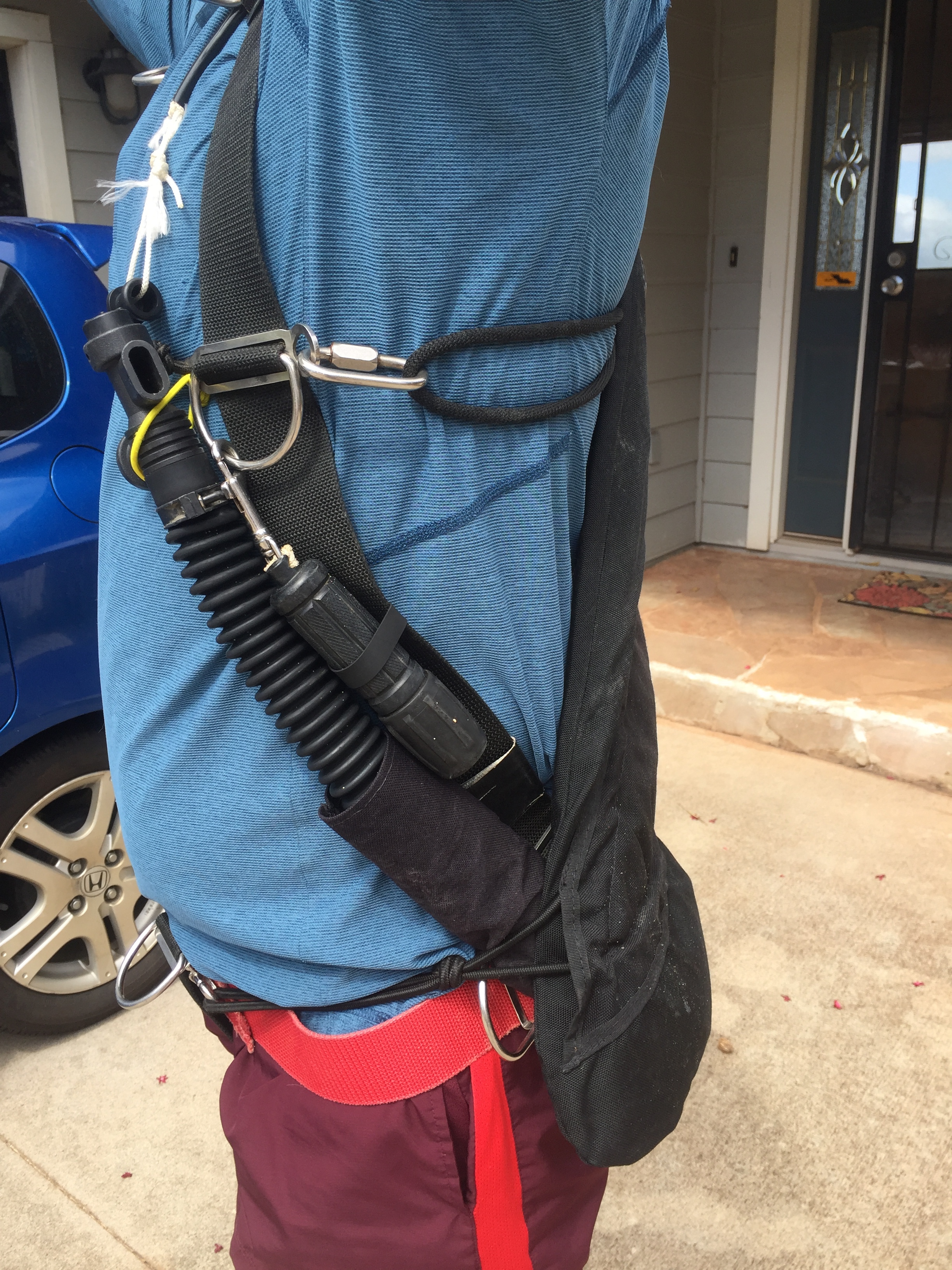
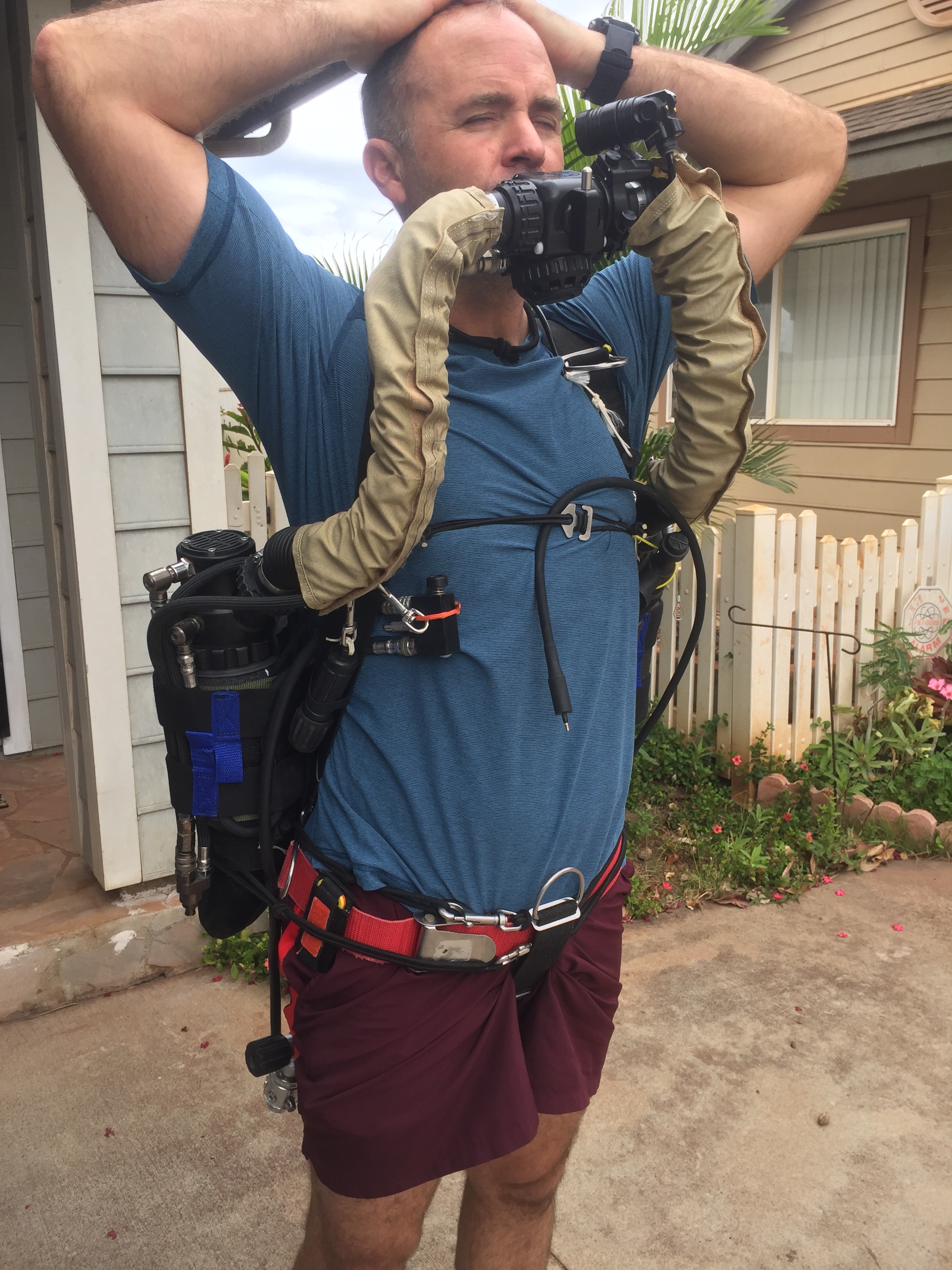
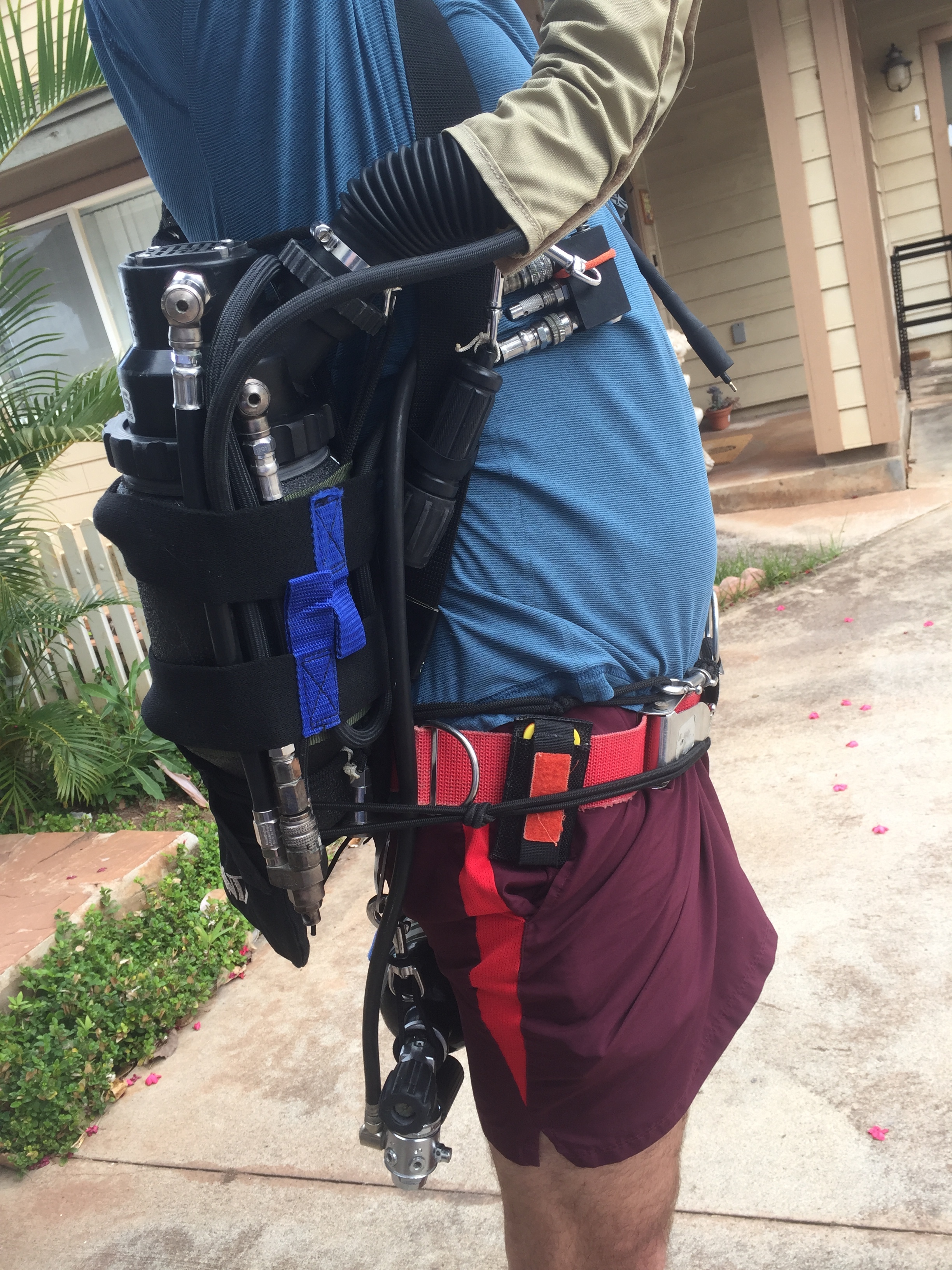
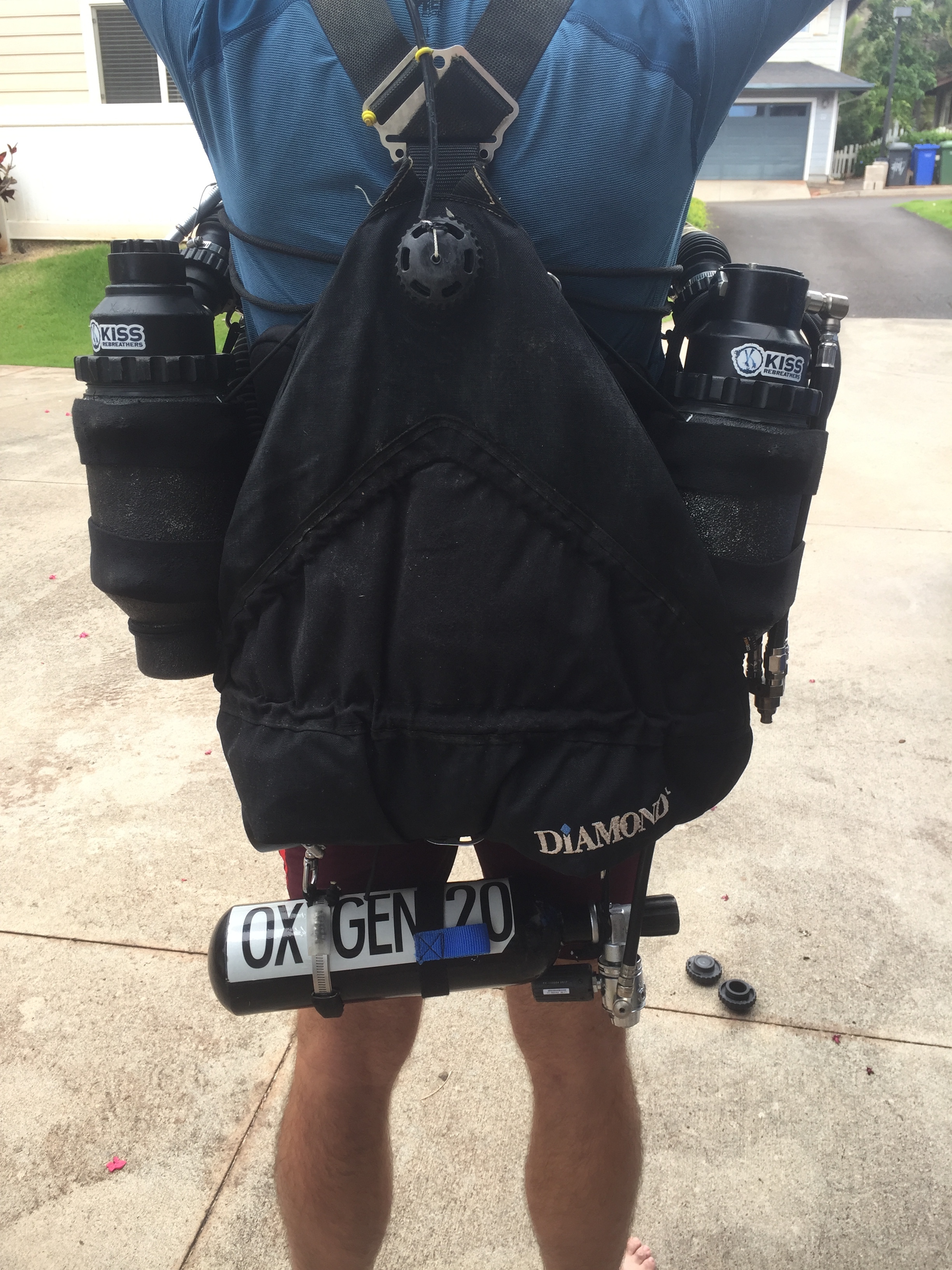
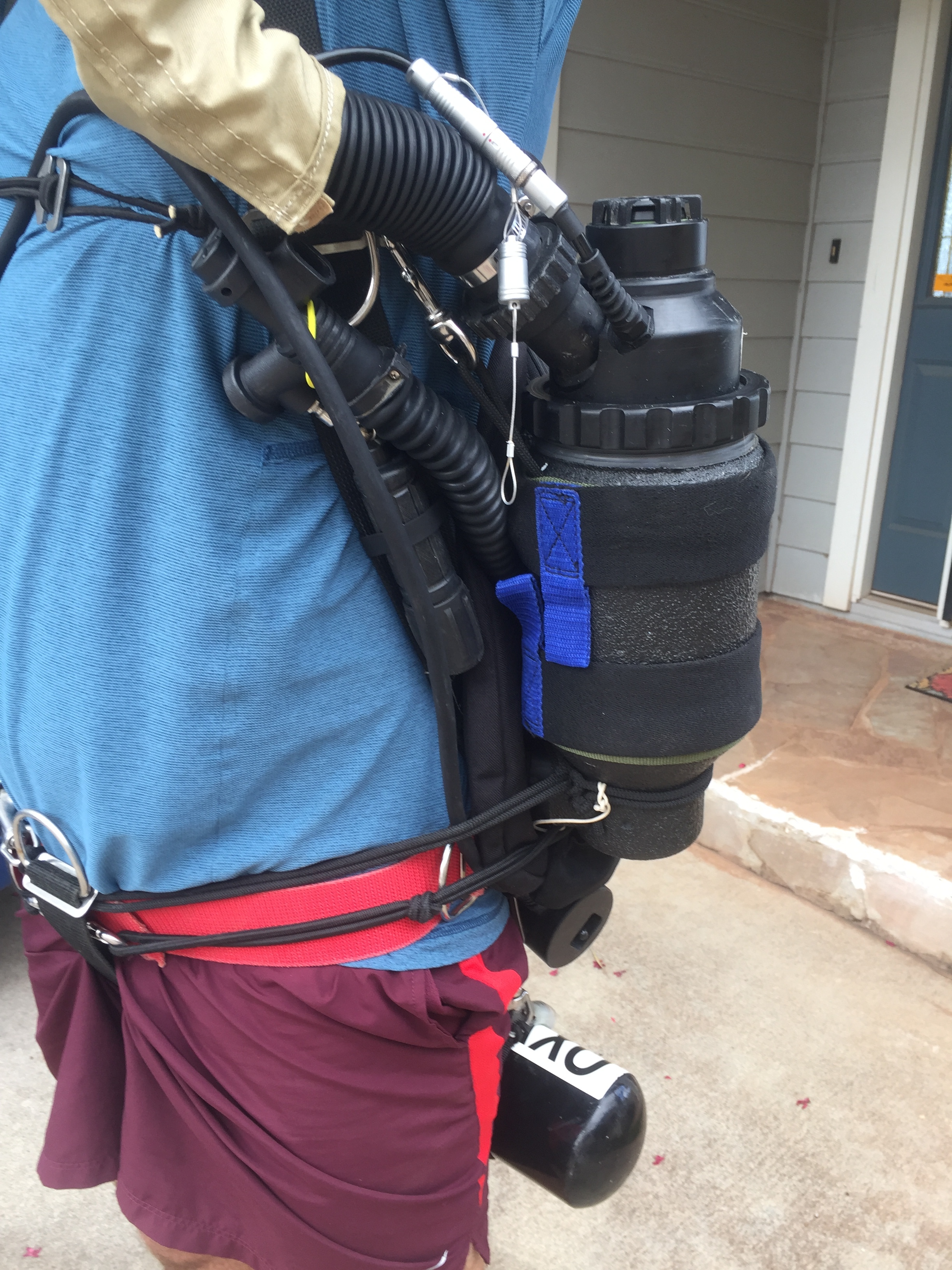
Stowing the loop will kitting up is easy- it hooks behind the neck. No more flapping about trying to find the loop floating behind you.






